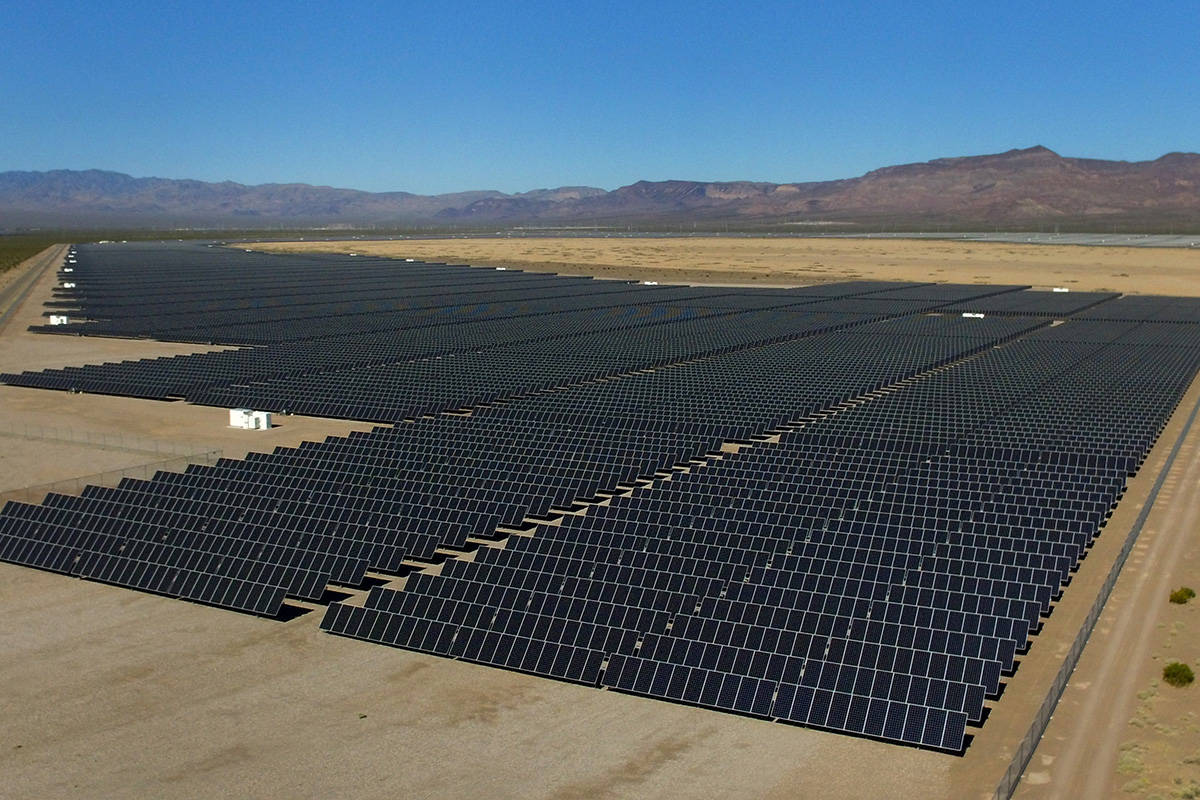VICTOR JOECKS: Heat waves show limits and dangers of relying on green energy
Despite decades of technological progress, heat waves now come with a question: Will there be enough power for everyone?
Las Vegas is having a brutal heat wave this week. The forecast for Wednesday was a high of 115 degrees before dropping to “just” 113 degrees on Thursday and Friday. Meteorologists are warning people to take precautions. Prolonged exposure to heat this intense can be deadly.
Weeks like this are a reminder that air conditioning is what enables a robust city to thrive in the middle of a desert. A/C, like many other modern conveniences, requires electricity.
Power is so ubiquitous that it’s easy to take for granted. But it should be obvious that reliable sources of power are foundational to modern society.
With surprising frequency, however, it’s no longer certain that electricity will be there when you need it most. The Electric Reliability Council of Texas is begging people to conserve power this week. Peak demand is likely to hit a record high. Rolling blackouts are possible.
Fortunately, Nevadans don’t seem to be facing the possibility of blackouts this week. But last August, NV Energy asked its customers to conserve electricity during a heat wave. That same month, California had rolling blackouts, taking power away from hundreds of thousands of people.
Why is this happening?
There are two ways to answer this question. One is to examine each situation individually. Usually, a series of unfortunate events produces demand that outstrips supply. For instance, Texas’ current problems include an early heat wave, a large number of power plants offline for repairs and wind energy producing less than is usually available. Texas also has its own electrical grid, whereas other states are interconnected.
But blazing temperatures aren’t new. The record highs for June 16 and 17 were set during a heat wave in 1940. If you zoom out, you can see a larger trend.
Over the past several years, there has been a shift from coal and natural gas power plants to “green” energy such as solar panels and windmills. That has happened in Nevada and California, but also in Texas, which generated the most wind energy of any state in 2020. The problem is that solar and wind energy sources can’t be cycled up like a natural gas plant to produce more energy when demand peaks. In fact, they might produce less energy when demand is highest.
Those three states have a renewable portfolio standard that requires a certain amount of renewable energy. In Nevada, the goal is 50 percent by 2030. In 2019, around 28 percent of its power came from renewable sources.
Absent a breakthrough in battery technology or a move away from an increasing dependence on unreliable power sources, the threat of blackouts is only going to increase.
Victor Joecks’ column appears in the Opinion section each Sunday, Wednesday and Friday. Contact him at vjoecks@reviewjournal.com or 702-383-4698. Follow @victorjoecks on Twitter.

















